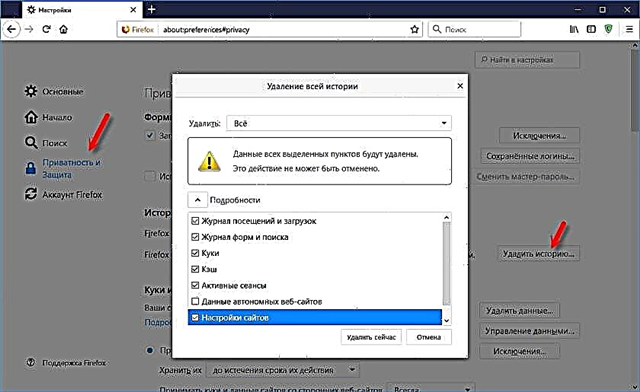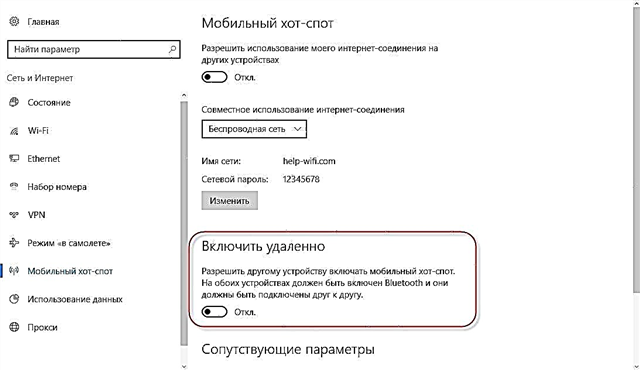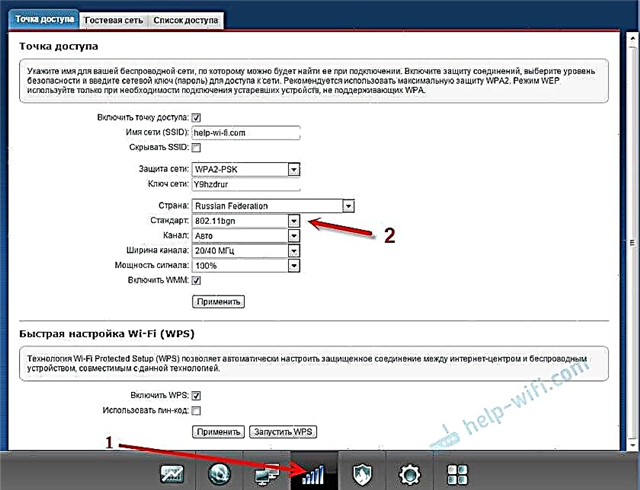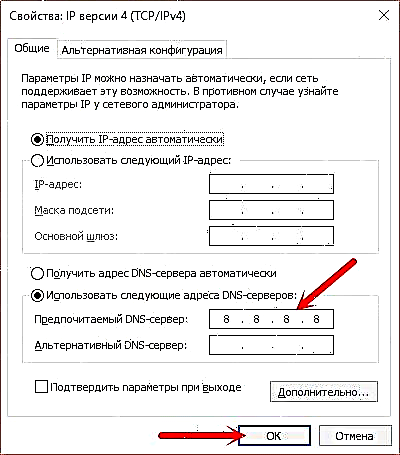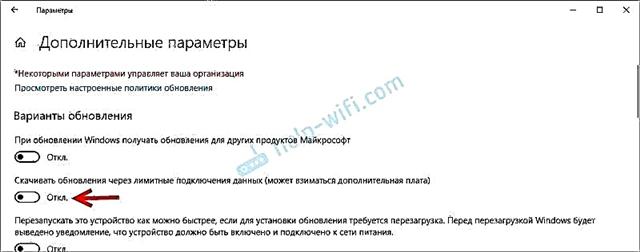Good afternoon !
To work with the Internet, a Windows 10 laptop with a 4G radio modem connected is used. Everything is set up, it works great, there are no complaints about the hardware and settings. But there is a nuisance - the system eats up Internet traffic to horror. In principle, one could spit on this problem, but here, to work with the Internet via a modem with a SIM card, a cellular operator's tariff plan with a low traffic limit is used, which forces us to take measures to save it.
Judging by the statistics issued by the system, the system itself and the Google Chrome browser have the greatest appetites - they consume traffic in hundreds of megabytes - gigabytes. And if the system, as I understand it, consumes traffic to download updates, then why the hell is such a huge traffic to the Chrome browser? From discussions on the Internet, as I understand it, it is impossible to prohibit updates for Windows 10. I tried to figure it out with Chrome - I didn't understand anything either ...
In short, gigabytes of data that I personally do not need are downloaded. For example, while I upload a file of twenty megabytes, the system downloads a hundred megabytes for itself. This situation makes me somehow uncomfortable ...
The question is - is it possible to somehow limit the appetites of Windows 10 and the Chrome browser for downloading data for updates, and what else is there? Or at least make the process more regulated?
And why does the Chrome browser have such huge traffic? I would be glad to refuse it, however, of all browsers, it is the most convenient ...
Answer
Good afternoon. If in the case of Windows 10 it is roughly clear where the traffic goes and what you can try to do with it, then with the Google Chrome browser everything is not so simple. An important point here: does Chrome use traffic even when you do nothing in it (do not download files, look at sites, closed all tabs, etc.)? That is, it eats up traffic in the background? It's just that the sites are now heavy, there is a lot of advertising, etc. And maybe the traffic that Chrome uses goes strictly to the download of these sites, some files, etc.
Start by disabling all extensions in Google Chrome, if installed. He may be downloading updates. But I don't think they weigh so much that it can significantly affect traffic consumption. And turning off browser updates is not very safe (if there is such an option at all, I did not find something). You can try to install an extension to block ads (although, as the author of the site, I am against such solutions). Perhaps blocking ads will allow you to save traffic through your 4G modem. As a last resort, you can try switching to a different browser: Opera, Mozilla Firefox are excellent browsers.
Now for Windows 10 and a lot of traffic. According to the idea, if Windows 10 detects your Internet connection as "Cellular", then it should automatically assign it the "Limit" status. But as I understand it, even in this case, important system updates and other data will be downloaded.
Several solutions:
- In the Settings, in the "Network and Internet" - "Data usage" section, there is an interesting item: "Background data transfer". Put "Always" there.
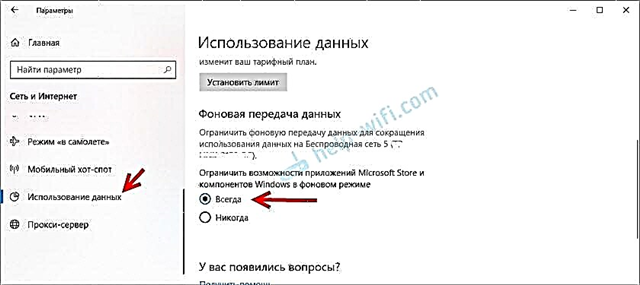 This will allow you to restrict Internet connection usage for applications and Windows components in the background.
This will allow you to restrict Internet connection usage for applications and Windows components in the background. - Uncheck the "Download over metered connection" checkbox in the parameters, in the "Devices" section. This will save on downloading drivers for new devices.
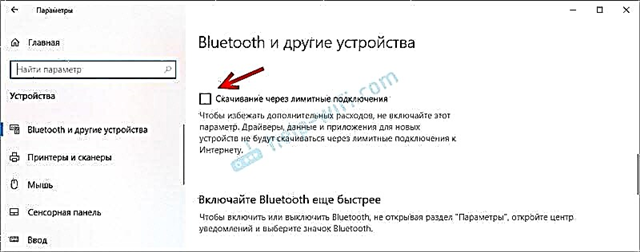 But if this does not affect traffic, then it is better to return this checkbox.
But if this does not affect traffic, then it is better to return this checkbox. - You need to make sure that your Windows 10 modem uses your 4G USB connection as a metered one. It is very important. I do not know how you define this connection in the parameters, in the "Network and Internet" section. How the system sees it. Therefore, it is difficult for me to give specific instructions.
You can tell the system whether the connection is metered or not through the registry (Win + R and the regedit command). You need to go to the branch HKEY_LOCAL_MACHINE SOFTWARE Microsoft Windows NT CurrentVersion NetworkList DefaultMediaCost
There, by default, the connection via 3G and 4G is set as a limit (value 2 - limit, 1 - not limit).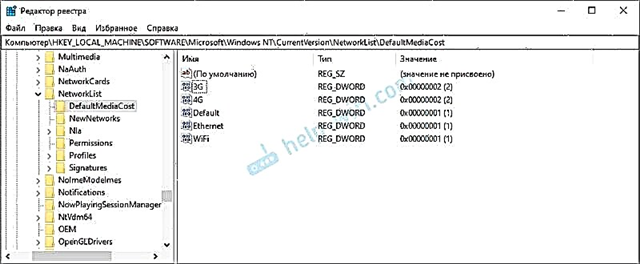 If you have 3G / 4G with a value of 1 - change to 2. To change, you need to do some more steps. Instructions are available on the Internet.
If you have 3G / 4G with a value of 1 - change to 2. To change, you need to do some more steps. Instructions are available on the Internet. - In the advanced update options, you must disable the "Download updates over metered data connections" feature.
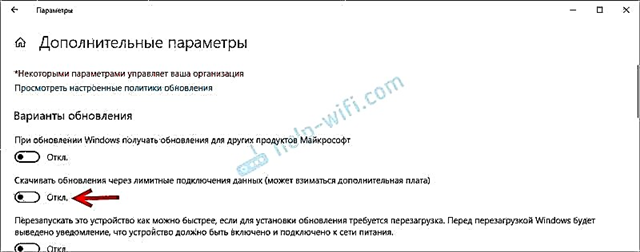
There may be other solutions. You can try to follow the recommendations from the materials on the network, which can be found at the request: "how to completely disable Windows 10 updates." We do not have such instructions, not our subject. You can also see information on queries "Windows 10 spends the Internet", or "restriction on the use of traffic over 3G / 4G in Windows 10".
Basically, of course, the system spends a lot of traffic downloading updates. Also, some programs can download updates automatically. Windows 10 can also spend the Internet on transferring some data to Microsoft, on exchanging information with some servers, etc. In the case of a metered connection, which usually works via a USB modem, this is a big problem.
11.08.19
29
Asked by Alex D

 This will allow you to restrict Internet connection usage for applications and Windows components in the background.
This will allow you to restrict Internet connection usage for applications and Windows components in the background. But if this does not affect traffic, then it is better to return this checkbox.
But if this does not affect traffic, then it is better to return this checkbox. If you have 3G / 4G with a value of 1 - change to 2. To change, you need to do some more steps. Instructions are available on the Internet.
If you have 3G / 4G with a value of 1 - change to 2. To change, you need to do some more steps. Instructions are available on the Internet.
